

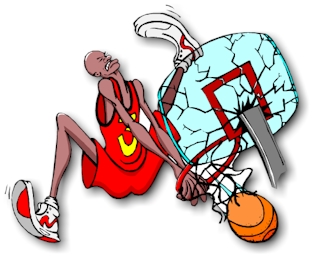
提起比賽,有些運動員會顯得雀躍萬分;反過來說,有些 運動員卻顯得沒精打采。最有趣的就是在同一個賽事或場合當中,不同的運動員可能都會分別有以上兩種頗為極端的表現,只是在程度上有所不同而已;又或者是 同一個運動員,在不同的賽事或場合當中,都可能會表現出不同程度的「喚醒水平」(arousal level,亦即興奮水平)。一般人相信,運動員的「喚醒水平」越高,其表現也會越好。
根據 Gould 與 Krane(1992),「喚醒水平」泛指一個有機體(人)的生理及心理活動,程度上可由熟睡一直伸延至強烈的興奮。Martens(1974)就曾以汽 車的引擎來比喻人的「喚醒水平」,汽車的引擎可以高速地轉動或只是慢慢地空轉,如果引擎的強度可以用每分鐘的轉速來衡量,人體的強度便可以用「喚醒水平」 來量度。不過,Landers 與 Boutcher(1993)就不大同意,他們指出人體和汽車的引擎是截然不同的,因為汽車的引擎在過熱時可以被關掉,但人只要還存著一口氣,則「喚醒水 平」仍舊是處於一個持續進行的狀態。
 當人處於「過高」的「喚醒水平」時,就會經歷從自主神經系統(autonomous
nervous system,ANS)而來的,種種使人厭惡的性緒(emotional)反應(例如,緊張、擔擾、恐懼、不安等),這些反應對運動表現通常都會造成負面的影響。由於不同的運動項目,對「喚醒水平」的要求都有所不同,每個人在不同「喚醒水平」下的表現亦有所分別;因此,「喚醒水平」的管理對運動表現是非常重要。
當人處於「過高」的「喚醒水平」時,就會經歷從自主神經系統(autonomous
nervous system,ANS)而來的,種種使人厭惡的性緒(emotional)反應(例如,緊張、擔擾、恐懼、不安等),這些反應對運動表現通常都會造成負面的影響。由於不同的運動項目,對「喚醒水平」的要求都有所不同,每個人在不同「喚醒水平」下的表現亦有所分別;因此,「喚醒水平」的管理對運動表現是非常重要。
驅動理論
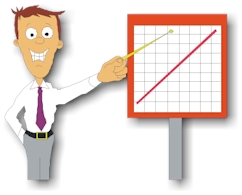 根據「驅動理論」(Drive Theory),「喚醒水平」與表現成「直線」關係,亦即是說,「喚醒水平」越高,表現越好(Hull,1943;Spence 與 Spence,1966)。Oxendine(1984)亦發現這種直線關係在力量、速度及耐力性項目尤為明顯。因此,在「驅動理論」的影響下,教練員普遍會在賽前用一些鼓勵的說話以激勵(psych-up)(1)
運動員。可是「喚醒水平」與「焦慮」往往亦有連帶關係,一般來說,焦慮的程度越低,對運動員的表現越加有利,過分的激勵引至運動員到達一個過高的「喚醒水平」,引來種種負面的情緒反應,反而是不智的做法。正如 Landers 與 Boutcher(1993)指出,在實際情況之下,就算是舉重、短跑或中長跑運動員,他們似乎亦只有在某一程度的「喚醒水平」之下,才能發揮出應有的表現。
根據「驅動理論」(Drive Theory),「喚醒水平」與表現成「直線」關係,亦即是說,「喚醒水平」越高,表現越好(Hull,1943;Spence 與 Spence,1966)。Oxendine(1984)亦發現這種直線關係在力量、速度及耐力性項目尤為明顯。因此,在「驅動理論」的影響下,教練員普遍會在賽前用一些鼓勵的說話以激勵(psych-up)(1)
運動員。可是「喚醒水平」與「焦慮」往往亦有連帶關係,一般來說,焦慮的程度越低,對運動員的表現越加有利,過分的激勵引至運動員到達一個過高的「喚醒水平」,引來種種負面的情緒反應,反而是不智的做法。正如 Landers 與 Boutcher(1993)指出,在實際情況之下,就算是舉重、短跑或中長跑運動員,他們似乎亦只有在某一程度的「喚醒水平」之下,才能發揮出應有的表現。
備註:
(1)
由低興奮水平進入高興奮水平稱作 psych-up,由高興奮水平進入低興奮水平稱作
psych-out。
「倒U」理論
除了驅動理論外,另一個與理想「喚醒水平」有關的理論就是「倒U」理論(Inverted-U Principle;Yerkes 與 Dodson,1908)。根據「倒U」理論,在某一程度之下,運動員的「喚醒水平」越高,其表現越好。但超過了這個程度之後,運動員的「喚醒水平」越高,其表現就會越差。
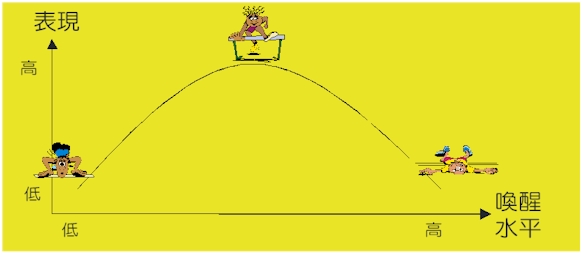
Lowe(1971)就曾驗証「喚醒水平」與棒球表現的關係。整體而言,其研究結果亦支持「倒U」理論。不過,其研究還有以下兩點重大的發現:(1)個別球員的「最理想喚醒水平」有所不同,及(2)任務的難度亦會影響到個別球員的「最理想喚醒水平」。其他學者的研究亦得到相類似的結果(Fenz 與 Epstein,1969:跳傘運動員;Klavora,1979;Sonstroem 與 Bernardo,1982:籃球運動員;Gould,Petlichkoff, Simons 與 Vevera,1987:射擊運動員;Burton,1988:游泳運動員)。
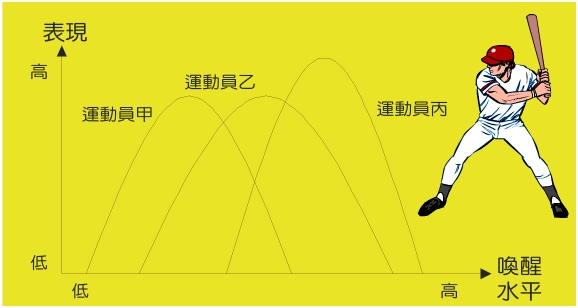
一般來說,如果任務只涉及簡單的動作,因為要求表現的水平一般較低,所以其「理想喚醒水平區」會較寬。亦即是說,「喚醒水平」無論是過高或過低,對這類任務的表現都不會構成重大的負面影響。反過來說,要是任務涉及到較為複雜的動作,因為要求表現的水平相對較高,所以其「理想喚醒水平區」亦會較窄。換句話說,只要「喚醒水平」稍為不足,又或者是偏高,都會對表現造成負面影響。
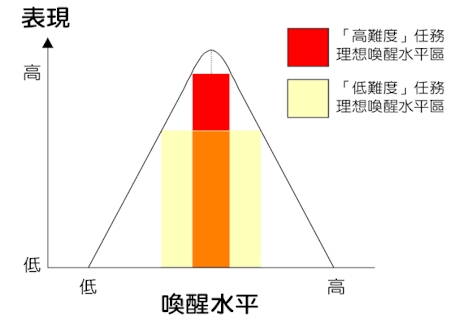
「喚醒水平」的管理
|
要提升「喚醒水平」,可採用「自我談話」的方法以激勵自己的情緒。Weinberg 與 Gould (1995)則建議可採用以下的方法來激勵自己:
|
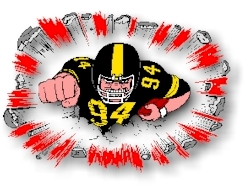 |
|
反過來說,想降低「喚醒水平」或放鬆自己,則可做些「深呼吸 」或借助「漸進放鬆法 」(Jacobson,1938)。Weinberg 與 Gould(1995)亦提議可嘗試以下的方法:
|
|

![]()
![]()
![]()
Burton, D. (1988). Do anxious swimmers swim slower? Reexaminating the elusive anxiety-performance relationship. Journal of Sport and Exercise Psychology, 10, 45-61.
Fenz, W. D., and Epstein, S. (1969). Stress in the air. Psychology Today, 3(4), 27-28, 58-59.
Gould, D., and Krane, V. (1992). The arousal-athletic performance relationship: Current status and future directions. In T. S. Horn (Ed.), Advances in Sports Psychology (pp. 119 - 142). Champaign, IL: Human Kinetics.
Gould, D., Petlichkoff, L., Simoms, J., and Vevera, M. (1987). Relationship between Competitive State Anxiety Inventory-2 subscale scores and pistol shooting performance. Journal of Sport Psychology, 9, 33-42.
Hull, C. L. (1943). Principles of Behavior. New York: Appleton-Century.
Jacobson, E. (1938). Progressive Relaxation. Chicago: University of Chicago Press.
Klavora, P. (1979). An attempt to derive inverted-U curves based on the relationship between anxiety and athletic performance. In D. M. Landers and R. W. Christina (Eds.), Psychology of Motor Behavior and Sport. Champaign, IL: Human Kinetics.
Landers, D. M., and Boutcher, S. H. (1993). Arousal-performance relationships. In J. M. Williams (Ed.), Applied Sport Psychology: Personal Growth to Peak Performance. Mountain View, CA: Mayfield Publishing.
Lowe, R. (1971). Stress, arousal, and task performance of Little League baseball players. Unpublished doctoral dissertation. University of Illinois, Urbana.
Martens, R. (1974). Arousal and motor performance. In J. H. Wilmore (Ed.), Exercise and Sport Science Reviews. New York: Academic Press.
Martens, R. (1987). Coaches Guide to Sports Psychology. Champaign, IL: Human Kinetics.
Oxendine, J. B. (1984). Psychology of Motor Learning. Englewood Cliffs, NJ: Prentice-Hall.
Sonstroem, R. J., and Bernardo, P. (1982). Intraindividual pregame state anxiety and basketball performance: A reexamination of the inverted-U curve. Journal of Sport Psychology, 4, 235-245.
Weinberg, R. S., and Gould, D. (1995). Foundations of Sport and Exercise Psychology. Champaign, IL: Human Kinetics.
Yerkes, R. M., and Dodson, J. D. (1908). The relation of strength of stimulus to rapidity of habit formation. Journal of Comparative Neurology of Psychology, 18, 459-482.
![]()
最後更新日期:2016/08/02